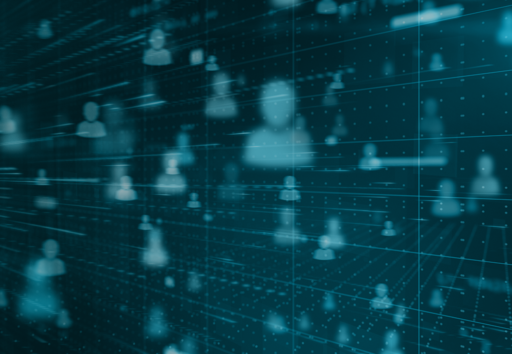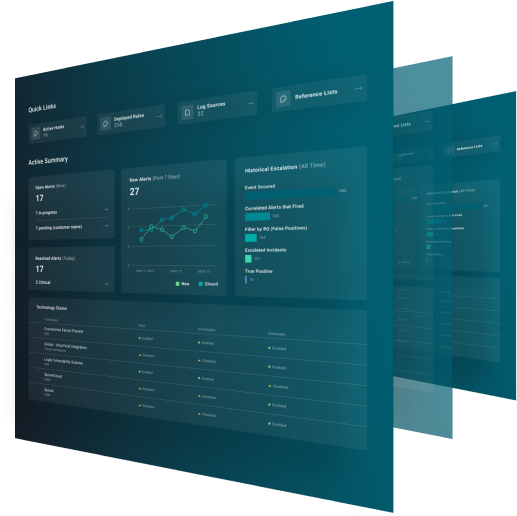RMM tools are a staple in enterprise environments, enabling organizations to efficiently oversee and maintain their IT infrastructure. These tools have many features to monitor assets’ performance and provide remote access to managed client machines—features that attract threat actors who are attempting to maintain access to a compromised network. RMM tools are being exploited in several ways: Threat actors are using the tools’ legitimately signed certificates to help bypass security mechanisms, employing network encryption and legitimate network relays to proxy connection to a victim, and securing remote desktop-like access to client machines, among other actions.
Between 2022 and 2024, more than one third of the intrusions ReliaQuest responded to involved RMM tools. All were perpetrated by cybercriminals either deploying ransomware, or likely intending to; affected organizations spanned multiple sectors and locations around the world. Given cybercriminals’ indiscriminate targeting, we have drawn upon our response and detection experience to present cybersecurity defenders with insights to mitigate the threat to any organization.
RMM Tool Abuse Advantages
The following list of reasons for RMM tools’ popularity among cybercriminals is based on a 2023 US Cybersecurity and Infrastructure Security Agency (CISA) advisory.
- Reduced resource development: Using commercial remote-access software provides a reliable and capable alternative to extensive resource development and additional costs.
- Host security bypass: Security tools, such as antivirus or endpoint detection and response tools, often fail to detect remote-access software because it uses legitimate certificates and exclusion paths.
- Network stealth: Many RMM tools provide end-to-end encryption and are accessed through vendor-operated relay servers, obviating the need for traditional command-and-control (C2) infrastructure that can be tracked by researchers and blocked by network security devices.
- Portable executables: Some remote-access software can be used as portable executables, allowing threat actors to circumvent administrative controls and software management policies without needing installation or administrator rights.
- Malware distribution and exfiltration: RMM tools often enable file sharing between compromised machines and those of attackers, as well as the execution of arbitrary commands. These features empower attackers to easily drop and execute additional tools or malware, or exfiltrate data.
- Simultaneous cyber intrusions: By using remote-access software, threat actors can efficiently manage multiple cyber intrusions simultaneously, and potentially access numerous networks through initial access brokers.
Commonly Abused RMM Tools
For some threat actors, RMM tools have become favorite choices for maintaining persistent access and have replaced custom backdoors and post-exploitation tools like Cobalt Strike and Metasploit. For other threat actors, RMM tools are appealing as a backup channel for when their primary channel gets blocked, or when they prefer a remote desktop-like session on a target host.
We have seen threat actors affiliated with Qbot use RMM tools such as Atera and Splashtop, in addition to Cobalt Strike, as an alternative channel for persistent access. Other threat actors, such as the “Scattered Spider” group, forego using traditional tools for access (e.g., Cobalt Strike), instead relying primarily on RMM tools. Other intrusions that ReliaQuest has responded to have involved cybercriminals affiliated with “ALHPV,” “Black Basta,” and “Conti.”
Of the many RMM tools available to threat actors, ReliaQuest has seen abuse of the following tools most often:
Atera:
Host Artifacts:
- Default Process Name: AteraAgent.exe
- Service Name: Atera Agent
Network Artifacts
- *.atera.com
- ps.pndsn.com
- pubnub.com
- atera.pubnubapi.com
Capabilities:
- Remote desktop access, provided through Splashtop (default) or other supported RMM software
- Execute commands through PowerShell or command prompt terminal
- Gather system information
AnyDesk
Host Artifacts:
- Default Process Name: anydesk.exe
- Service Name: AnyDesk Service
Network Artifacts:
- *.net.anydesk.com
Capabilities:
- Remote desktop access
- Transfer files between client and server
Splashtop
Host Artifacts:
- Default Process Names: SRService.exe, SRManager.exe, SRServer.exe, SRAgent.exe
- Service Names: Splashtop Remote Service, Splashtop Software Updater Service
Network Artifacts:
- *.api.splashtop.com
- *.relay.splashtop.com
Capabilities:
- Remote desktop access
- Transfer files between client and server
Connectwise/Screenconnect
Host Artifacts:
- Default Process Names: ClientService.exe, ScreenConnect.WindowsClient.ex
- Service Name: ScreenConnect Client
Network Artifacts:
- *.screenconnect.com
Capabilities:
- Remote desktop access
- Transfer files between client and server
- Run commands on compromised machine
- Gather system information
TeamViewer
Host Artifacts:
- Default Process Names: TeamViewer_Service.exe, TeamViewer.exe
- Service Name: TeamViewer
Network Artifacts:
- *.teamviewer.com
Capabilities:
- Remote desktop access
- Transfer files between client and server
ngrok
Host Artifacts:
- Default Process Names: ngrok.exe
- Service Name: N/A
Network Artifacts:
- *.ngrok.com
- *.ngrok.io
- *.ngrok-free.app
- *.ngrok-free.dev
- *.ngrok.app
- *.ngrok.dev
Capabilities:
- Remote desktop access via Windows RDP
Netsupport
Host Artifacts:
- Default Process Names: client32.exe
- Service Name: N/A
Network Artifacts:
- geo.netsupportsoftware.com
Capabilities:
- Remote desktop access
- Transfer files between client and serve
- Run commands on compromised machine
Mitigation of Popular Tool Abuse
To prevent outbound traffic to the domains listed above, create firewall and forward proxy rules for software that is not authorized in your environment. Some forward proxies categorize those domains as “remote access,” which can be set to deny the traffic by default, with added exceptions for destination required by authorized software. Additionally, implement GPOs for Software Restriction Policies (SRP) in Active Directory to only allow your preferred remote management software.
Threat Forecast
We predict, with high confidence, that abuse of RMM software, and commercial tools in general, will not decrease in the long term. The ease of use and success these tools have provided will likely foster continued uptake, and lead to increased adoption by additional threat actors. Organizations should take the time to baseline software used in their environments, to understand what is being used, establish policies that allow and disallow specific software, and apply security controls and detection rules that prevent unauthorized use or raise alerts of it.
What ReliaQuest Is Doing
To identify unauthorized use of RMM software, ReliaQuest offers specific detection rules. Implementing these rules will allow defenders to identify tool abuse and unauthorized software that violates policy obligations. These rules will need to be calibrated to each organization’s environment, to attain a higher level of fidelity and reduce false positives.
Recommendations and Best Practices
The ReliaQuest Threat Research Team offers the following inexhaustive list of recommendations and best practices to establish a secure foundation against the general threats and tactics, techniques, and procedures (TTPs) mentioned in this report.
- Establish policy and procedures outlining authorized RMM software and acceptable use: Perform an audit to identify remote-access software used in the environment. With IT managers and administrators, create a policy listing authorized RMM software, and procedures outlining how and when the software should be used. Thereafter, perform audits regularly to check for unauthorized software use.
- Implement detections rules and perform threat hunting: Ensure you have adequate host- and network-based telemetry across your environment, and implement detection rules to identify unauthorized RMM software. Perform frequent threat hunts to identify anomalous activity that could indicate unauthorized use of allowed remote software.
- Block remote-access network categories: Configure firewalls and forward proxies to block known network relay domains (see network artifacts listed above) related to unauthorized remote access software. Using forward proxies and third-party DNS resolvers that provide content filtering, block all traffic categorized as “remote access”, and create exceptions for destinations required by authorized software.
- Block RMM execution via application control: Active Directory (AD) has a Group Policy-based feature, called SRPs, that identifies software and controls its ability to run. This feature can be used to perform application allowlisting, so that only your preferred remote management software can run. Alternatively, some dedicated application control technologies can perform the same function and block specific software from executing.




